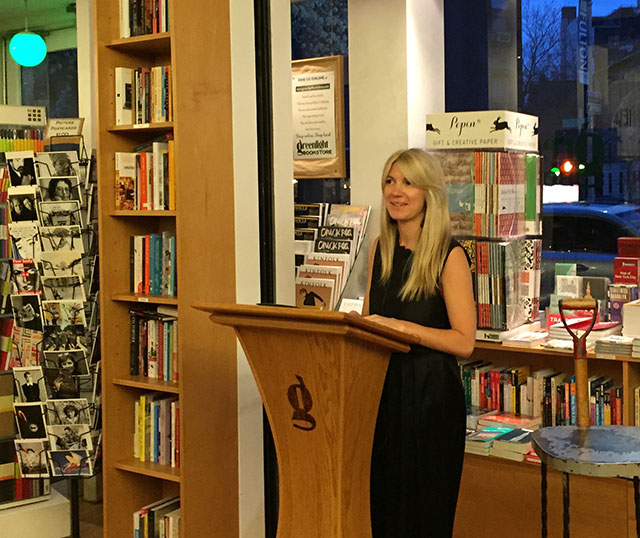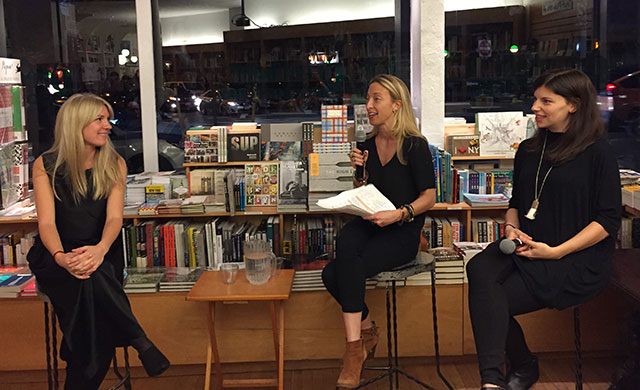
Molly Prentiss presented her novel Tuesday Nights in 1980 at Greenlight Bookstore in Brooklyn. She was joined by her agent, Claudia Ballard and her editor Alison Callahan. Callahan is an editor at Scout Press books, a new imprint from Simon & Schuster with just one other book previously published, Bill Clegg’s Did you Ever Have a Family.
Tuesday Nights in 1980 is set in New York City on the cusp of the new year. A synesthetic art critic James Bennett, artist Rual Engales, and recent midwestern transplant Marie Olliason round out this cast as they collide in the New York City art scene.
“I wanted to read her forever,” Ballard says of Prentiss’s work. They had been introduced by Daniel Alarcón who at the time was Prentiss’s professor in graduate school. The novel began its life as Prentiss’s thesis.
The challenge for Prentiss was learning how to structure a novel. She feels that imagery and a sense of place come naturally to her, but a strong narrative arc was hard. She says she kept coming up against this urge to be experimental, but in the end it came down to simply doing a lot of hard work. There were big sections of the novel that were lost along the way, she says.
“The book will always be what it wants to be,” Callahan says. She continues, saying that as an editor, she ends up reading a lot of fiction. When Prentiss’s manuscript arrived, she sat down at her kitchen table and began reading it, finishing it at 2 in the morning. The next day she headed to the office to make an offer before anyone else.

The novel enters into the New York City art scene. Prentiss herself is surrounded by the modern art scene. She attended graduate school with visual artists. Her father and grandfather were both artists, as his her fiance. So it was natural extension of her world to write about art. she wanted to explore what it would mean to survive in the world.
She says she doesn’t see herself as an artist, but she does love making things. Writers are not in a profession that produces physical manifestations of their work. “I envy the physical product that comes from visual art,” she says.
One big component of the novel is Marie’s coming to the city narrative. Prentiss says that everyone has stories about people pooping on the doorstep–the unexpected things that happen in the city. She wanted to tell that story too. Prentiss has her own arrival story. She originally lived in California, in a place that she describes as having a great number of trees. She survived in New York for just a year before retreating. Eventually she returned on a fellowship.
The novel is set nearly four decades in the past, a decision that Prentiss chose because of the possibility of the era. “I can’t be actually nostalgic about it,” she says. But she does have a strong sense that 1980s New York had a specific kind of community, one that isn’t necessarily possible anymore. She describes it also as her own desire to live in 1980s New York for a while.
Prentiss first started writing the novel in 2009 while in graduate school. An early draft was her thesis, and when she handed it in, she had it bound up like a book. She says she was very proud of that effort, especially at the time. Then when her agent and editor got ahold of it, a lot was changed.
Now she often writes in the morning for three or four hour spurts. She writes quickly without regard to editing, part of the process that comes later, she says. If she spends too much time thinking about what she is writing as she writes, she gets too self conscious, she says.